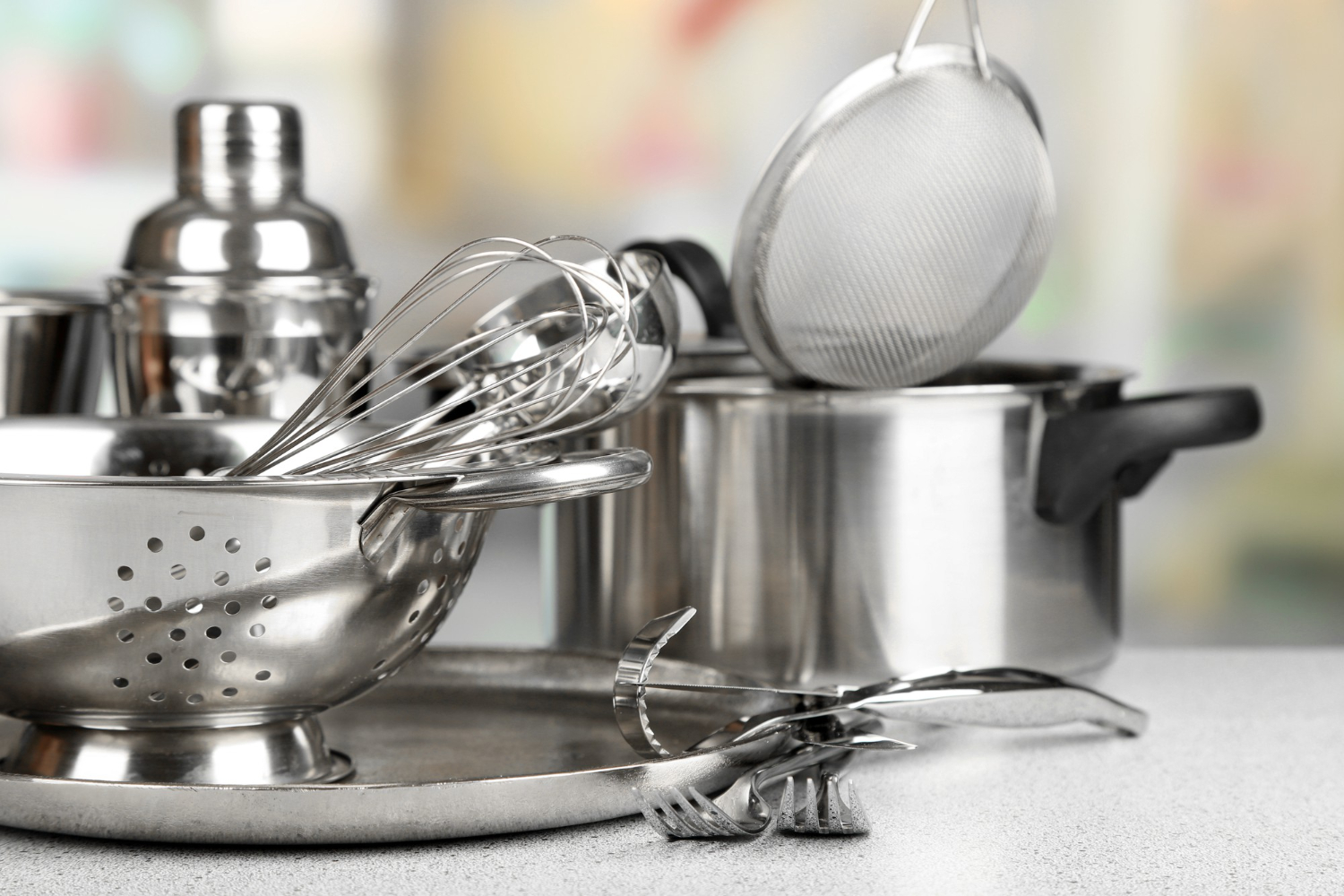Induction cooktops use magnetic fields to generate heat, as most induction owners know. Therefore, all induction cookware must have a magnetic bottom. Induction cooktops require magnetic cookware. These questions have no definitive answers. “All metals attract magnets,” for example, is a typical response.
This is partially true, as magnets do not stick to all metals. To learn which metals are magnetic, you must repeat the learning process. This includes cast iron, steel, and some stainless steel pans. In these dishes, no matter how many other ingredients are added or how durable the pan is, the food will not cook.
Do Magnets Stick to Stainless-Steel?
The “magnet test” theory is often referred to as a myth or urban legend. The fact is, not all types of stainless steel are magnetic, so you will find that while some types of stainless steel do magnetize, other classes will not.
- As the metals in their natural states, brass, copper, gold, and silver, do not attract magnets; they are natural magnets. So, in the first place, these metals are soft and flimsy.
- In simple terms, magnets will only adhere to metals with high magnetic strength, such as iron and cobalt. That is why some metals are not magnetic.
- You can add iron or steel properties to make soft metals stronger. For example, even a minimal amount of iron can change the magnetic properties of gold.
Magnet testing to the stainless steel cookware is done by applying a magnet and seeing if it sticks. If it sticks, then it is safe and nickel-free. If it doesn’t stick, it is unsafe and has nickel (austenite steel). However, when a magnet was to stick to the steel, the material affected would not be nickel (austenite) alloy.
Why Are My Stainless-Steel Pans Not Magnetic?
Alloy steel is a mixture of steel with at least 10.5% weight of chromium. When combined with oxygen, chromium reacts with water to form chromium oxide, a non-reactive layer of chromium oxide that prevents the rusting of the iron in the stainless steel. As a result, stainless steel with a higher chromium content has more excellent corrosion resistance.
Iron-chromium binary alloys are standard ferritic stainless steels. Alloys of this type are ferromagnetic when the room temperature is reached. If you heat any ferromagnetic alloy to a high enough temperature, it will become paramagnetic, just like all ferromagnetic alloys. When people aren’t maintaining their magnetic field, they will still be attracted to other people’s magnetic fields.
Stainless steel containing ferritic iron is typically unmagnetized. However, steel will become magnetized when placed in a magnetic field. Still, it will also retain a small amount of magnetism after the magnetic field is removed. The outcome of this behavior is due to the metal’s microstructure. In essence, ferritic steel comprises a small collection of magnetized regions called magnetic domains, which are magnetized. Still, each domain is generally oriented in a different direction.
Do Magnets Stick to 304 Stainless-Steel?
Stainless steels are mainly iron-based alloys that are most widely known for their generally excellent corrosion resistance. This is because chromium, the predominant alloying element in stainless steel, makes corrosion resistance possible. Many varieties of stainless steel exist. Austenitic iron and ferritic iron are the two main types of iron; they each have different atomic arrangements.
- Stainless steels, in general, tend to be magnetic, while ferritic stainless steels are not. This is because both iron and a ferritic stainless steel structure are essential for retaining its magnetic properties.
- 18/10 and 18/8 stainless steel belong to the 304 series. That number you see stamped on stainless steel cookware may have looked unfamiliar. Austenitic 304 stainless steel is known as a non-magnetic type of stainless steel.
- Stainless steel containing ferritic iron is typically unmagnetized. However, steel will become magnetized when placed in a magnetic field. Still, it will also retain a small amount of magnetism after the magnetic field is removed.
The outcome of this behavior is due to the metal’s microstructure. In essence, ferritic steel comprises a small collection of magnetized regions called magnetic domains, which are magnetized. Still, each domain is generally oriented in a different direction.
Benefits of stainless-steel pan
- The product has a long shelf life. You can hit it, scratch it, and scrub it to your heart’s content. Additionally, it is much more challenging to work with than aluminum or copper. Also, it has a higher melting point than either of these metals. Finally, it is the most durable of all the commonly available cookware materials.
- It appears to be in good condition. However, the gleaming, polished luster of a high-quality stainless steel set is challenging to match.
- Simple to keep up with. If your stainless steel cookware is dull, all you need is a cup of white vinegar and water. It will restore the shine and sparkle to your stainless steel cookware.
- Non-reactive. Stainless steel is relatively inert, meaning that it does not react with food in any way. This is in contrast with pure copper and aluminum, which react with acidic foods.
- Excellent for searing. It can withstand higher temperatures without any problems.
- It has a wide range of applications. Stainless steel is also excellent for frying, steaming, sautéing, boiling, braising, steaming, stewing, poaching, and other cooking techniques. Almost anything is possible.
- The price is extremely reasonable. Sets made of stainless steel are generally quite affordable, but the actual value lies in their long-term durability. A single pan or set of pans will last a lifetime.
- It can be used with an aluminum or copper core. You can benefit from the durability and non-reactive properties of stainless steel while also benefiting from the conductivity of the other material in this way.
- Cookware that is safe to use. While there are some limitations, it is one of the safest cookware options available today.

